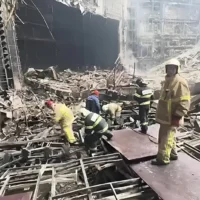What Causes Blood Vessels to Burst?
Burst blood vessels, or ruptures, can happen for a variety of reasons. The most common causes include:
- Injury or Trauma: Direct trauma or impact to the body—such as a fall, a blow, or a sports injury—can cause small blood vessels under the skin to break, resulting in a visible bruise or red spot.
- Strain: Sometimes, even non-traumatic activities can lead to burst blood vessels. Straining during intense exercise, lifting heavy objects, or even severe coughing or sneezing can increase pressure in small blood vessels, causing them to break.
- Certain Medications: Blood-thinning medications, like aspirin or anticoagulants, can increase the risk of bruising and blood vessel rupture. Steroids and other medications can also weaken blood vessels over time.
- Aging: As we age, blood vessels and skin become more fragile and susceptible to damage. Older adults may notice more frequent bruising, even with minimal impact.
- Underlying Health Conditions: Conditions such as high blood pressure, diabetes, or vascular disorders can weaken blood vessels, increasing the likelihood of rupture. Some infections and blood disorders can also contribute to this issue.
Symptoms of a Busted Blood Vessel
When a blood vessel bursts, it usually presents with some characteristic symptoms, including:
- Red or purple discoloration: This is often the first visible sign and appears under the skin near the site of the burst vessel.
- Pain or tenderness: This can range from mild discomfort to more pronounced soreness, especially if the injury was significant.
- Swelling: In some cases, mild swelling may occur in the area surrounding the busted vessel.
- Bruising: As the body reabsorbs the leaked blood, the red or purple spot often turns into a bruise that changes color from purple or blue to greenish-yellow before eventually fading.
Treatment Options for Burst Blood Vessels
Most cases of burst blood vessels are minor and heal on their own within one to two weeks. However, here are some helpful treatment options:
- Rest and Elevation: If the burst blood vessel is on a limb, try to rest and elevate the area to reduce blood flow and swelling.
- Ice Packs: Applying a cold compress or ice pack to the affected area can help reduce swelling and relieve pain. It’s best to apply ice for 10-15 minutes at a time, with breaks in between.
- Compression: For minor injuries, wrapping the area with a bandage can help reduce blood flow to the area, which can minimize bruising and swelling.
- Pain Relief: Over-the-counter pain relievers like acetaminophen can help reduce discomfort. Avoid blood-thinning medications, like aspirin or ibuprofen, as these can worsen bruising.
- Avoiding Strain: If strain or exercise caused the burst vessel, reduce activity and avoid strenuous movements until the area has healed.
When to Seek Medical Attention
While most cases of burst blood vessels are minor and do not require medical intervention, it’s essential to consult a healthcare provider if you experience:
- Frequent or unexplained bruising: This could indicate an underlying medical condition that needs evaluation.
- Significant pain or swelling: If a burst blood vessel is accompanied by severe pain or persistent swelling, medical assessment may be necessary.
- Discoloration spreading: If the discoloration spreads or worsens, it may be a sign of a larger injury or other medical issue.
- Symptoms of an underlying condition: If you have a known health condition, such as diabetes or a clotting disorder, and notice frequent or unexplained bruising, inform your doctor.
Preventing Burst Blood Vessels
Taking steps to maintain healthy blood vessels can help reduce the risk of ruptures:
- Exercise Regularly: Moderate exercise promotes good circulation and strengthens blood vessels. Avoid overexertion, as excessive strain can increase the likelihood of vessel rupture.
- Eat a Balanced Diet: Foods rich in vitamin C, vitamin K, and antioxidants can support vascular health and prevent vessel damage.
- Stay Hydrated: Adequate hydration keeps blood vessels flexible, reducing the risk of rupture.
- Protect Your Skin: As blood vessels weaken with age, it becomes easier to sustain bruising or vessel rupture from minor bumps. Wearing protective gear during activities that might involve impact can be helpful.
Final Thoughts
Burst blood vessels can be an unsettling sight, but they are generally harmless and heal on their own. Maintaining a healthy lifestyle, protecting vulnerable areas, and avoiding excessive strain can minimize the likelihood of occurrence. However, if you notice persistent, unexplained, or severe symptoms, consulting a healthcare professional can help ensure there are no underlying issues contributing to frequent vessel ruptures.












